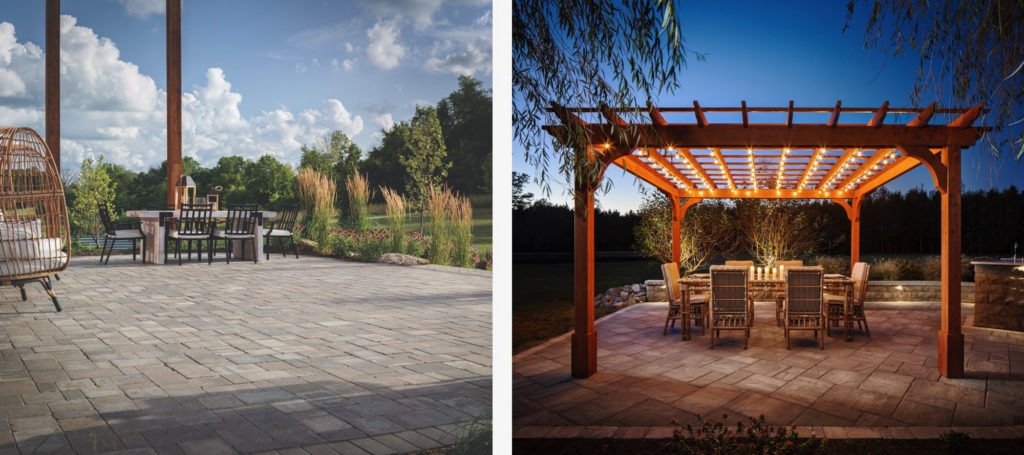Designing for Outdoor Dining
Words: Joe Raboine
Words and Photos: Joe Raboine, Director of Residential Hardscapes, Belgard
When the weather is right, there’s nothing more enjoyable than a family meal in the sunshine or under the stars. And there’s no need to head to a restaurant to dine al fresco – many homeowners are enjoying home-cooked delicacies in their own backyard.
As we’ve talked about before, outdoor kitchens are one of the most popular projects among your client base today. And what’s the kitchen without a dining space where they can enjoy what they cooked up?
If you are working with a client ready to design their outdoor dining area, there are several design ideas and considerations to walk through to ensure they have an optimal, fully functional space.

Consider the Size
The size of the potential dining space should be considered and adjusted to fit the way the space will be used. Talk to your client about how they envision the flow of the space – do they want a separate area or adjacent to the kitchen – and how to maximize it in relation to the rest of the yard.
If your client’s yard space is at a premium, adding built-in seating can pull the space together. This offers durable, ample seating options for dining, relaxing or a nice happy hour on the patio. You can create built-in seating in a variety of configurations and with a mixture of different materials, like hardscapes and composite decking. This adds more visual interest and texture in the space as well.
The Right Elements
While these may not directly be in the dining space, it’s important to consider the elements within the client’s kitchen. If they already have an outdoor kitchen, or you’re designing it in tandem with their dining room, talk to them about what they need for the perfect outdoor meal.
Having a fully integrated outdoor kitchen can maximize convenience with the right tools for prep, cooking and storage. An outdoor kitchen with a prep and sink station, refrigerator and grill or oven means less trips inside to grab ingredients, warm up a dish or keep beverages cool.
Shade + Light
Even though your client wants to spend time in the sun, they still need some shade to stay cool and reduce eye strain (as well as the dreaded sunburn). There are a variety of shade elements you can incorporate into the dining room design, like pergolas, pavilions and umbrellas. Talk to your client about what they envision and incorporate the shade structure that works best with both their vision and yours.
You also need to think about lighting when installing different shade structures. Functionality is key, especially as your clients opt to use their space in the evening. If you have a structure like a pavilion or pergola, hanging outdoor chandeliers are a great option and adds stylistic flair. For umbrellas or a more minimalist style, you can add string lights. Also think through additional lighting that can make the space brighter, such as hardscape and landscape lighting.
From Design to Install
Every element in an outdoor dining room should be carefully considered so the space meets the needs of your client. Make sure you’ve communicated all the features they want to include, as well as how they will use the area most often. If budget is a priority, you can always find ways to phase out the project so that it works best for you and the client.